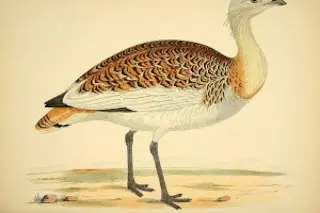Image: Flickr/Biodiversity Heritage LibraryNo, that's not a typo. Bustards are birds, and these birds can teach us a thing or two about romance. That's because male bustards get with a lot of ladies, which can make passing around STDs a real problem. Fortunately, lady bustards are hip to this, and they make sure to examine the male's cloaca (the awesome "universal hole" of birds and reptiles, out of which comes poop, pee, and eggs!) looking for the telltale signs of infection. If the male looks like he's got an STD, it's no go. So, to help keep themselves infection-free, male bustards eat specific kinds of beetles that reduce STDs, even though the bugs are poisonous. And it's only the males that do this--they will pick the medicinal/poisonous blister beetles out of an array of food choices, while the females will studiously avoid the nasty bugs, suggesting that the males are ...
Polygamous male bustards eat poisonous beetles to rid themselves of STDs.
Discover how male bustards self-medicating with blister beetles may enhance their mating success and STD resistance.
More on Discover
Stay Curious
SubscribeTo The Magazine
Save up to 40% off the cover price when you subscribe to Discover magazine.
Subscribe













